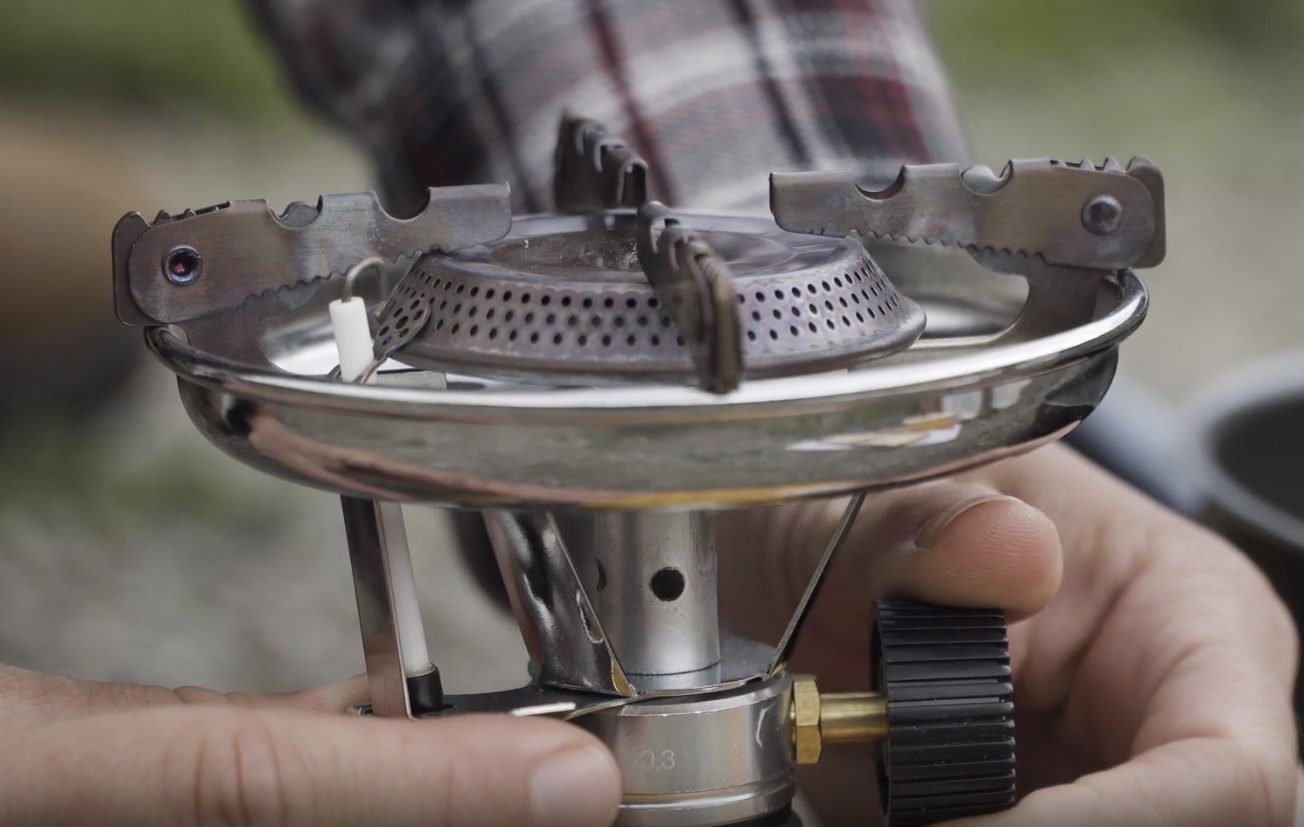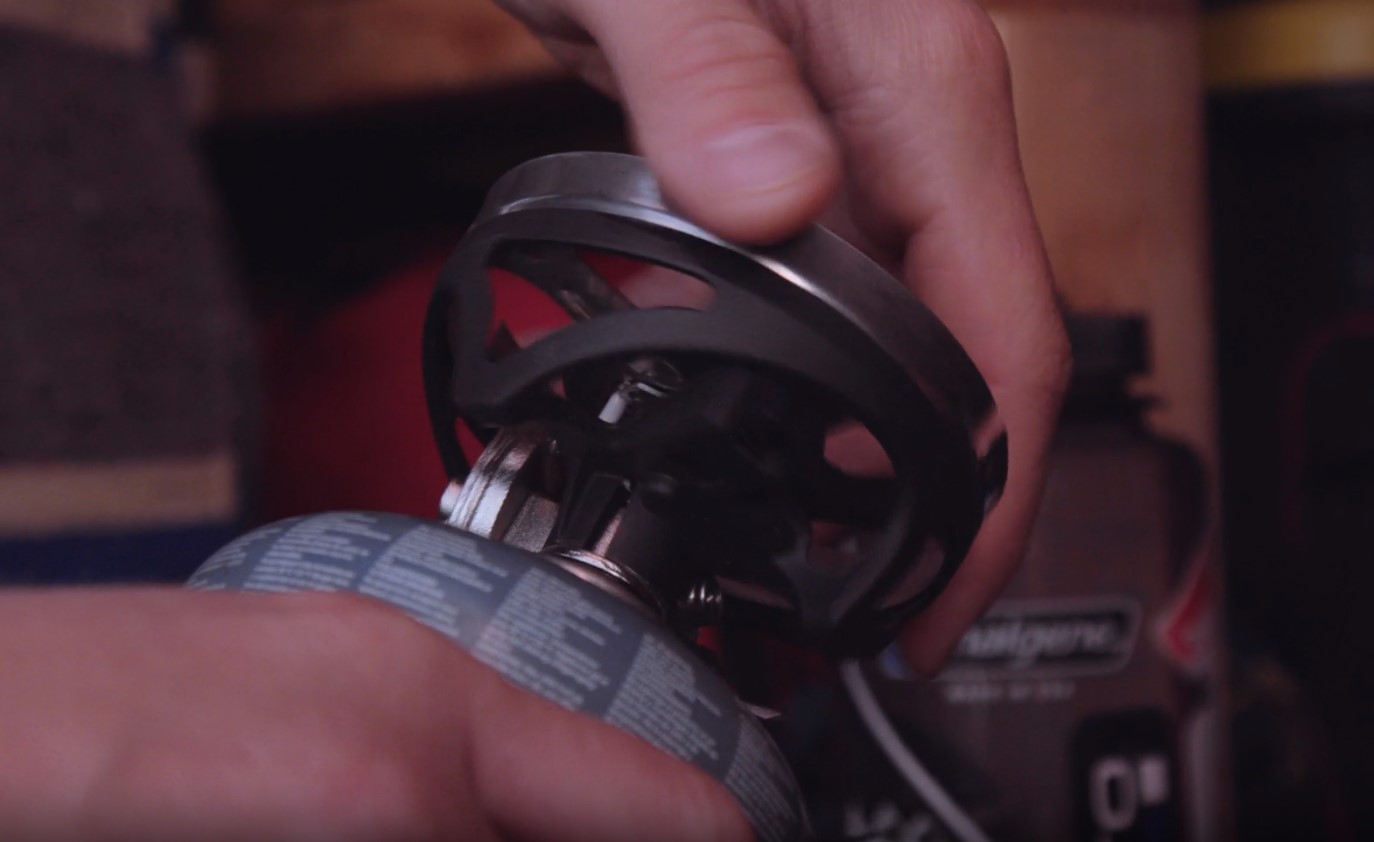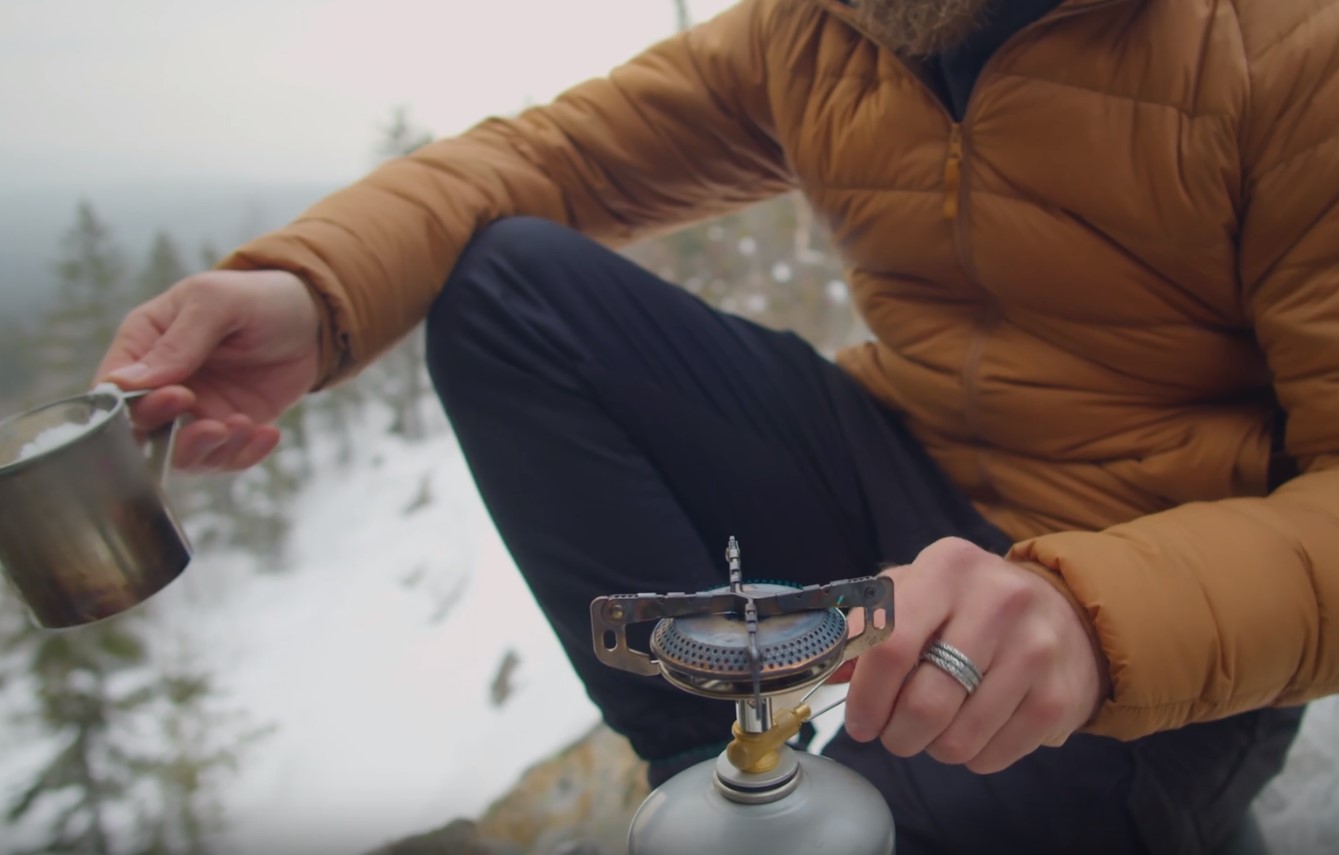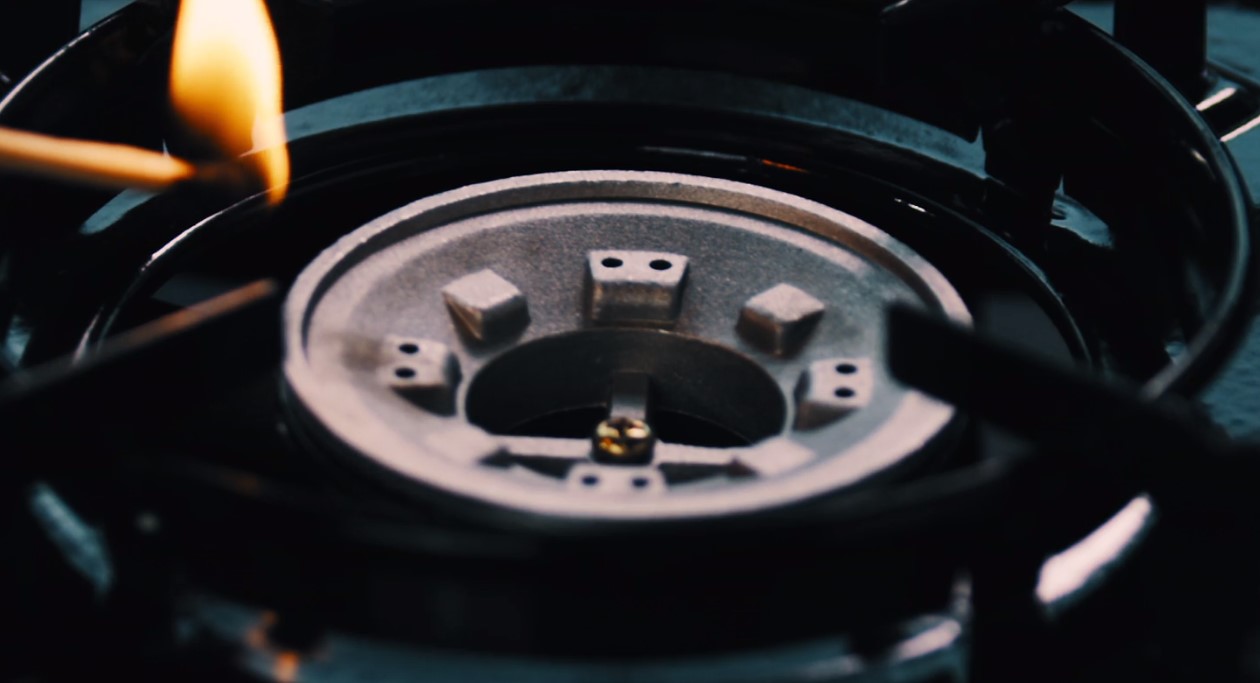As someone who has spent countless nights under the stars, I’ve learned that a good day on the trail ends with a warm meal. That’s why choosing the right camping stove isn’t just a matter of preference—it’s essential for the kind of outdoor experience you want to have.
Knowing what your aim should be is essential in this case. The reason is quite simple, a warm meal is an important factor for keeping yourself warm while you’re camping.
That is why I want to share insights drawn from my extensive outdoor adventures to help you select the best camping stove for your needs.
Types of Camping Stoves

The market offers a variety of stoves, each designed for specific camping scenarios. Understanding the differences between different stoves is key to making an informed choice.
Canister Stoves
Canister stoves are the go-to for many backpackers. They’re small, straightforward to use, and set up in seconds—ideal for those who want to minimize fuss after a long day’s hike.
Here’s what sets them apart:
- Portability: Their compact size makes them easy to pack.
- Convenience: Canister stoves attach directly to a fuel canister and often require no priming or preheating.
- Altitude and Temperature Sensitivity: They can struggle in cold temperatures or at high altitudes.
Liquid Fuel Stoves
For those venturing into colder climates or cooking for larger groups, liquid fuel stoves are often preferred.
They run on refillable fuel bottles and are known for:
- Versatility: They function well in a range of temperatures and altitudes.
- Economy: Refillable bottles mean you can carry as much or as little fuel as you need.
- Maintenance: They require more upkeep than canister stoves but are typically more durable.
Alternative-Fuel Stoves
These stoves use fuel sources like wood, alcohol, or solid fuel tablets.
They’re a niche choice but can be the perfect fit for certain trips:
- Environmental Impact: Using renewable resources like wood can reduce waste.
- Availability: In some locations, finding canister or liquid fuel can be challenging, making alternative-fuel stoves attractive.
Important Things to Consider

When selecting a camping stove, several features will impact its performance and convenience.
- BTU Power (Heat Output): The British Thermal Unit (BTU) rating of a stove will tell you how much heat it can produce, which is crucial for boiling water quickly or cooking meals efficiently.
- Simmer Control: A stove with good simmer control is invaluable for more gourmet camp cooking, allowing for a wider range of dishes to be prepared.
- Stability: A stable stove is a safer stove, especially when cooking on uneven ground. Look for wide bases or stoves that sit close to the ground.
Fuel Types and Availability
Your stove’s fuel type will affect everything from its performance to the ease with which you can resupply on long trips.
- Propane: Propane is readily available and easy to use, making it a favorite for many campers, despite its bulk.
- Butane/Isobutane Mix: These canisters are lightweight and work well in moderate conditions, but their performance can wane in the cold.
- White Gas and Other Liquid Fuels: These fuels are known for their consistent performance in a variety of conditions, making them a reliable choice for adventurers.
Size, Weight, and Portability

When venturing into the great outdoors, the size, weight, and portability of your camping stove become pivotal factors in your overall experience. For backpackers, the adage “every ounce counts” is a guiding principle.
A stove that’s too heavy or bulky can weigh you down and limit the distance you can comfortably travel. Conversely, a stove that’s too small may not meet your culinary needs, especially if you’re cooking for more than one person.
Compact Designs
Compact stoves are the champions of the trail for solo hikers or pairs. These stoves are designed to be as lightweight as possible, often weighing just a few ounces without sacrificing functionality. They typically fold or disassemble to fit neatly into your pack, taking up minimal space.
Here’s what makes them stand out:
- Efficiency: Despite their small size, many compact stoves are highly efficient, boiling water in just minutes.
- Simplicity: With fewer parts and simple designs, they are often easier to use and maintain.
- Fuel Canisters: Most compact stoves use small, screw-on fuel canisters that are easy to pack and replace.
However, their minimalistic design means you might sacrifice some stability and wind resistance, and they’re not always the best for gourmet cooking.
Larger, Freestanding Models
When the campsite becomes a home away from home, larger, freestanding models are the stoves of choice. These are perfect for group camping, where you’re cooking larger meals and need more space to do so. They often feature multiple burners and a more robust construction to support bigger pots and pans.
Here’s why they might be the right choice:
- Cooking Power: With more burners and higher BTU outputs, these stoves can handle multiple dishes at once.
- Stability: Their design provides a stable cooking platform, which is crucial when handling hot liquids and larger cookware.
- Features: Many come with built-in wind screens, adjustable flame controls, and even griddles or grill plates.
The trade-off for these conveniences is size and weight. These stoves are heavier and bulkier, and they’ll take up more space in your car or campsite.
Durability and Maintenance
As is the case with other gear, like tents, maintenance is crucial for stoves. The longevity of your camping stove is directly tied to its construction and how well you maintain it.
A durable stove, made from quality materials like stainless steel or aluminum, can handle the bumps and scrapes of outdoor life. It’s not just about withstanding the occasional drop or rough handling; it’s also about enduring the repeated cycles of heating and cooling that can stress the materials over time.
Maintenance is equally important. Even the most rugged stove will need some TLC. Regular cleaning, proper storage, and timely repairs are all part of keeping your stove in peak condition.
For instance, after each trip, you should:
- Clean: Wipe down the stove to remove food spills and soot.
- Inspect: Check for any signs of wear, such as cracks or corrosion.
- Service: Perform any necessary maintenance, like lubricating moving parts or sealing leaks.
Material Quality

The materials used in the construction of your stove will determine not only its durability but also its weight and sometimes even its efficiency.
| Material | Durability | Weight | Heat Efficiency | Cost |
|---|---|---|---|---|
| Stainless Steel | High | Moderate | Good | Moderate |
| Aluminum | Moderate | Light | Moderate | Lower |
| Titanium | High | Very Light | Excellent | Higher |
Camping Type May Play a Role
When selecting a camping stove, the type of camping you plan to do can greatly influence your choice. Let us see how stealth, primitive, and traditional camping each have different requirements that will affect your decision.
Primitive Camping
Primitive camping takes you back to basics, often without the amenities of a campground. This type of camping is about self-sufficiency and simplicity.
- Fuel Availability: You may not have access to purchase fuel, so a multi-fuel stove or one that can use natural debris like twigs and leaves can be advantageous.
- Durability: Your stove needs to be rugged and reliable, as primitive camping can put more strain on gear.
- Simplicity: The stove should be easy to repair with limited tools and resources. Simpler mechanisms with fewer parts are ideal.
- Environmental Impact: Consideration for the environment is key in primitive camping, so stoves that have a minimal impact, such as wood-burning stoves, are often preferred.
Traditional Camping

Traditional camping, or car camping, is what most people envision when they think of camping. It typically involves a campsite with amenities like fire pits and picnic tables and allows for heavier and more luxurious gear. Dry camping can have similar traits, in relations to how scarce the water is.
- Cooking Performance: Traditional camping stoves can be larger and more powerful, with multiple burners to accommodate cooking for groups.
- Convenience Features: Look for stoves with windshields, adjustable flame controls, and perhaps even griddles.
- Fuel Type: Propane stoves are popular for traditional camping due to their ease of use and consistent performance.
- Portability: While bulkier than stoves designed for backpacking, traditional camping stoves should still be portable enough to move from your vehicle to the campsite.
Your choice of stove should align with the demands of your camping style to ensure a smooth and enjoyable outdoor cooking experience.
Stealth Camping
Stealth camping involves setting up camp in an unobtrusive manner and leaving no trace of your presence after departure. Set your tent in a way that it is not easily noticeable. It’s usually done in areas where camping is not explicitly allowed or in places where you prefer not to draw attention.
Here’s what to consider for stoves:
- Low Visibility: Stoves should be compact and easy to conceal, with no bright colors that stand out.
- Quiet Operation: Some stoves can be quite noisy; a quieter stove is preferable to maintain a low profile.
- Efficiency: You’ll want a stove that can quickly cook or heat water to minimize the time your camp is set up.
- Fuel Source: Canister stoves are often the best option here for their ease of use and quick setup. If you’re trying to minimize waste and leave no trace, a stove that can use natural fuel like wood may be preferable.
FAQs
What is the best camping stove for a large group?
A larger multi-burner stove, as well as a larger tent, is needed to accommodate bigger pots and pans is ideal for groups.
How do I choose a stove based on the type of food I want to cook?
If you plan to cook complex meals, choose a stove with good simmer control and multiple burners.
What are the lightest camping stoves?
Ultralight canister stoves or small wood-burning stoves are typically the lightest options.
Can camping stoves be used at high altitudes?
Liquid fuel stoves are generally better suited for high altitudes.
Summary
In my years of trekking through forests and scaling peaks, I’ve come to appreciate the role of a reliable stove in enriching the camping experience. It’s not just about the food you cook; it’s about the ease and enjoyment of preparing it.
The best camping stove for you is the one that fits seamlessly into your adventure, whether that means boiling water for a solo hike or cooking a feast for a family campout. Reflect on your needs, consider the factors I’ve outlined, and choose a stove that will be your trusty companion for many meals to come.
Hey everyone, I’m Jared. Outdoor life wasn’t something I inherited. My parents had never been on a trail or in a tent. The outdoors found me another way. My best friend in middle school had a deep appreciation for nature, and his enthusiasm rubbed off quickly. We spent countless afternoons trekking through local trails, soaking up everything we could along the way.
That interest never faded. Through college, I kept hiking and spending as much time outdoors as possible. After junior year, I took a break from school to chase a dream: completing the Appalachian Trail. I made it through, but not without setbacks. I spent nearly every dollar I had on gear—some pieces were solid, but others let me down hard. One highly praised backpack barely survived a week. Watching money vanish like that stung. No one deserves to be misled.
Too many reviews felt like fluff. I knew something had to change. I started asking other hikers and survivalists what they looked for, what they struggled with, and what they wish they had known sooner. Over time, a clear picture formed. People didn’t just need help picking gear—they needed to avoid unnecessary purchases. They wanted clear answers, honest reviews, and practical advice.
That’s when GearDesciple began to take shape. It started as a passion project and became a trusted source for survival, hunting, and everyday carry insights.
As the site grew, so did the workload. Late one night, I called my brother Matt and pitched the idea of joining forces. He jumped in, and it turned out to be one of the best moves I’ve ever made. His dedication and insights strengthened the site, and together we’ve built something we’re proud to share.